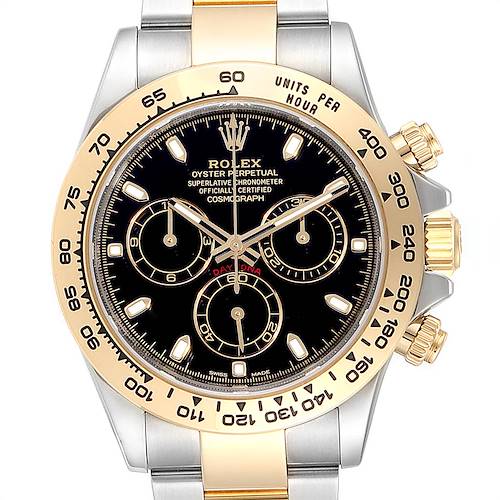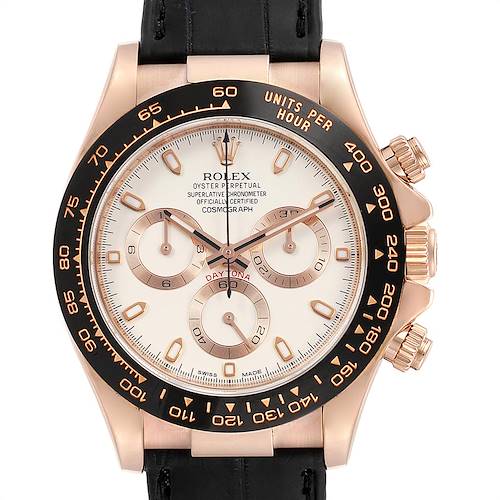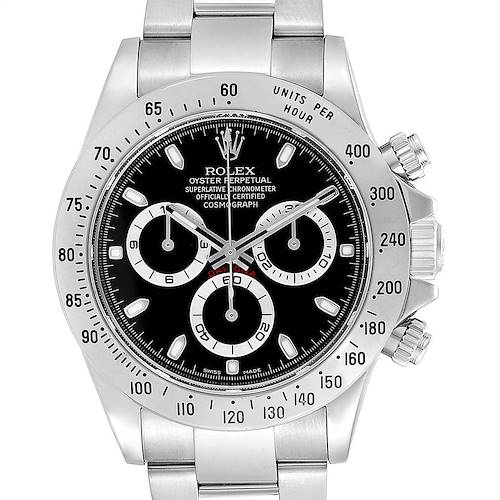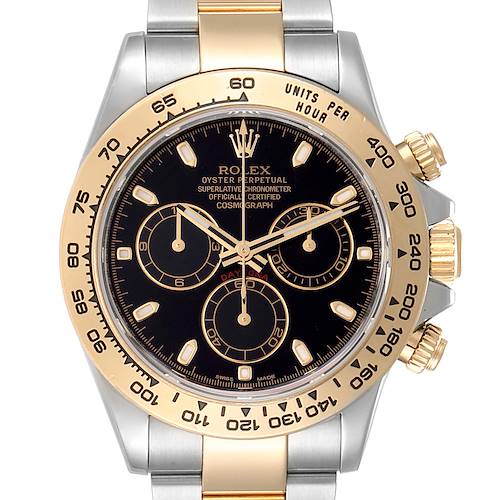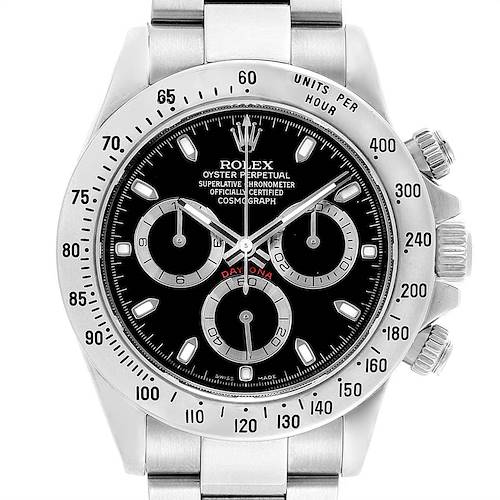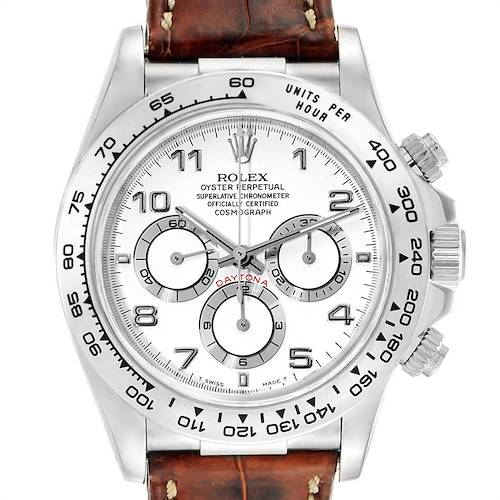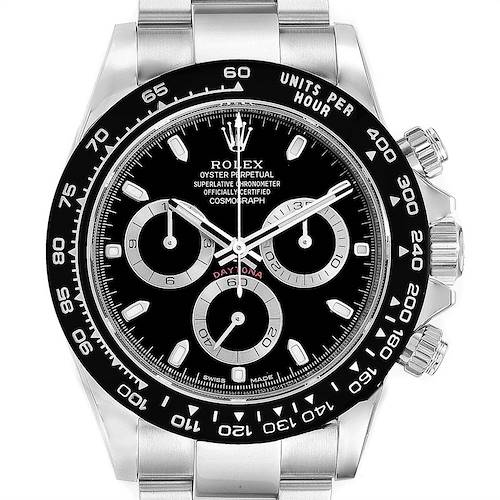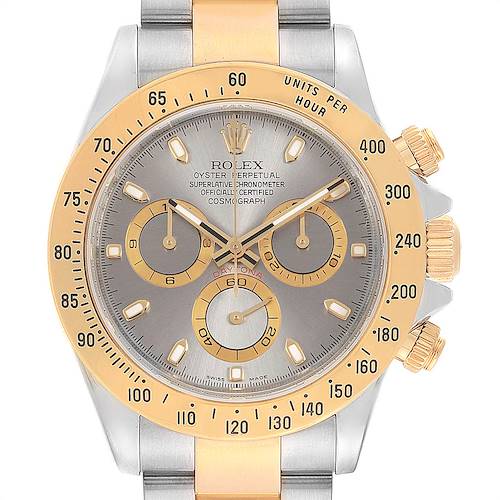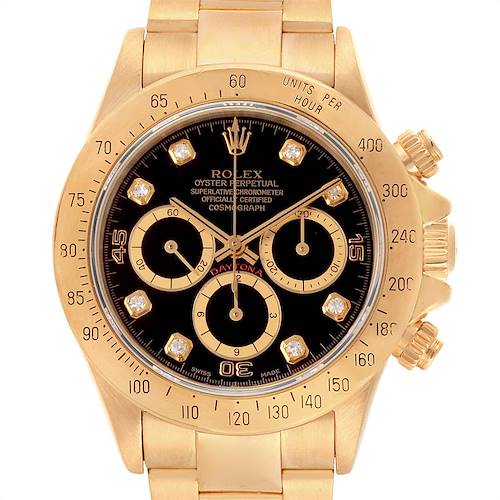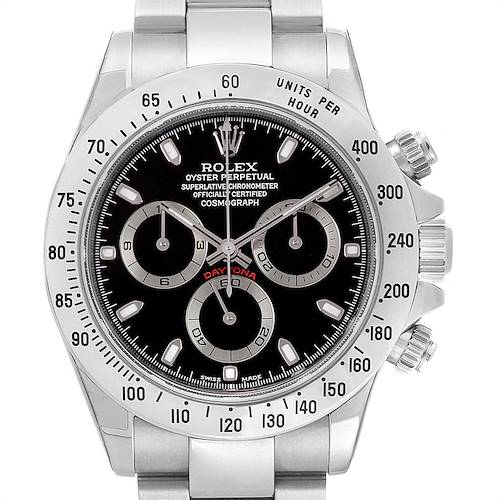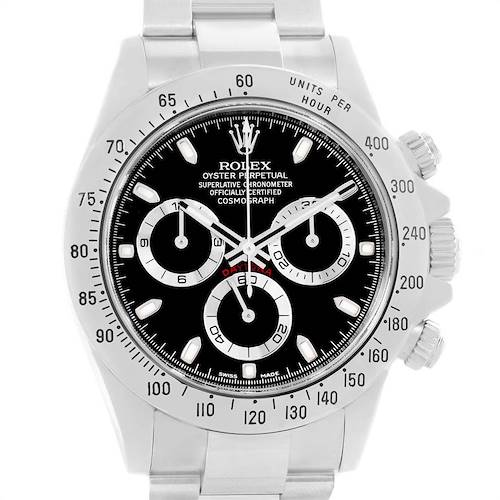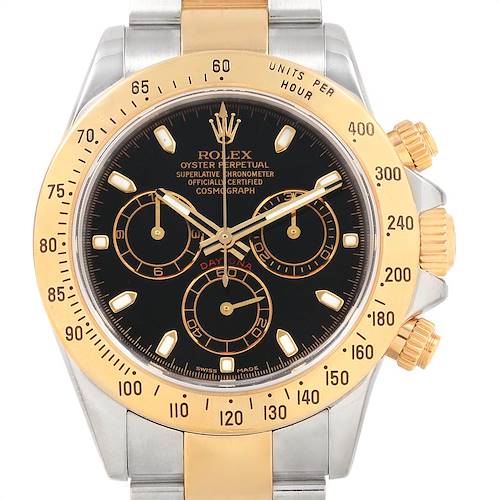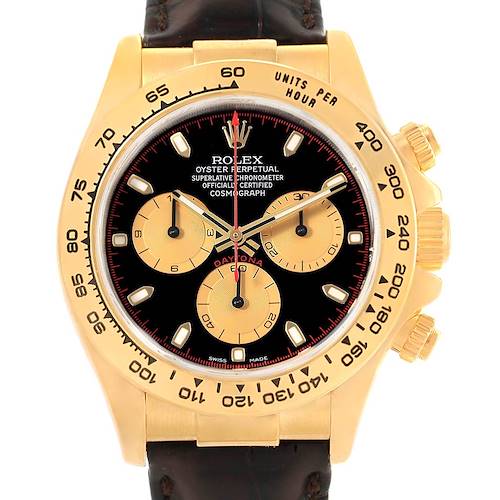- CALL US (404) 814-1814
- LIVE SUPPORT
- EMAIL US
-
WISHLIST (0)
-
CART(0)

Rolex Daytona Watches
1,121 MATCHES FOUND
Tailored for individuals who seek precision and flair, the Rolex Daytona perfectly complements the contemporary adventurer. Whether you find yourself on the racetrack or navigating through the urban landscape, the Daytona's iconic design and flawless functionality ensure you effortlessly stand out from the crowd.
SwissWatchExpo ARCHIVE - RECENTLY SOLD
The Rolex Cosmograph Daytona stands as an enduring symbol of unparalleled excellence in the world of chronographs.
Introduced in 1963, the Rolex Daytona was specifically crafted to cater to the demands of professional race car drivers seeking a reliable instrument to measure time intervals and average speeds with precision. Its moniker pays homage to the thriving speed and racing culture of Daytona, Florida, that emerged in the early 20th century.
Equipped with a tachymeter bezel for calculating average speed, the Daytona swiftly became a cherished choice among motorsports aficionados. Its ability to accurately monitor elapsed time cemented its status as an essential accessory for racers.
Through the passage of time, the Daytona has undergone iterative developments, with each advancement elevating its allure and functionality. From the esteemed steel models to the opulent gold and platinum variations, Rolex continues to push the boundaries of innovation in design and technology. Standout iterations include the Cerachrom bezel edition, seamlessly blending modern materials with traditional aesthetics, and the iconic Paul Newman Daytona, distinguished by its distinctive "Exotic dial" design and revered worldwide.
The Rolex Daytona remains in a league of its own, setting a benchmark for chronograph watches with its timeless allure and precision craftsmanship. Recognizing the significance of owning a Rolex Daytona, SwissWatchExpo meticulously inspects each timepiece in its collection to uphold the standards of authenticity and excellence.
How to Sell My Rolex Daytona
Sell or trade-in your Rolex Date for the best price with SwissWatchExpo. SwissWatchExpo makes it easy to sell or trade in your used or pre-owned Rolex Daytona to keep your luxury watch collection fresh!
Frequently Asked Questions
What Is A Rolex Daytona?
The Rolex Cosmograph Daytona is the brand's chronograph watch, introduced in 1963. It is characterized by a tachymeter bezel, screw down pushers, and three chronograph sub-dials.
How Can I Tell If My Rolex Daytona Is Real?
Because of the great demand for Rolex Daytona watches, they have become a target for counterfeiters. Each Rolex watch is made to the highest standards, and with top quality materials. If even a minute detail comes across as shoddy, you can be certain that it's not the real deal.
When buying any luxury watch, it is essential to do research on your chosen model and reference. If you are familiar with its most minute details, then you can more easily spot a fake. Your best defense against buying a fake timepiece is to purchase your watch from a reputable and trusted dealer, such as SwissWatchExpo, who can provide a guarantee of authenticity on the watch.
Why Are Rolex Daytona Watches Difficult To Obtain?
Rolex Daytona watches are difficult to come by because they are made with limited production runs. This is especially true for the earliest Daytona models. Because the Rolex Daytona wasn't popular then, production numbers were also low.
Rolex Daytona watches are also known to have years-long waitlists. When a Rolex Daytona is introduced to the market, authorized dealers usually have a roster of clients who have reserved their slot to get the timepiece. This is where buying pre-owned presents many advantages – it opens up your options to include previous versions, limited editions, and even discontinued styles.
How Do I Wind A Rolex Daytona?
Your watch has to be wound before being worn for the first time, or if it has stopped. To wind the watch, unscrew the winding crown until it pops out of its position and is free from the threads securing it onto the case. Then, turn it several times clockwise or away from you. At least 25 turns are recommended for adequate partial winding. The watch will stay wound automatically as long as it is worn on the wrist.














